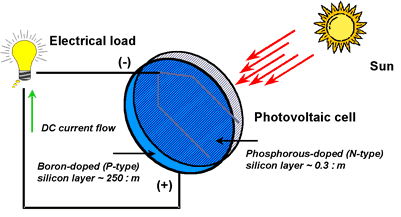|
Electricity:
Electricity is the movement of electrons through a conductor (like a wire). If the electrons pass through a heating element, the electrical energy becomes heat, If electrons move through a coil of wire in a motor, they produce a magnetic field, which is then used to make work by making the motor turn. The amount of work that is performed by a given amount of electricity is a measure of the ‘power’ and is expressed in “watts”. A thousand watts equals a “kilowatt (KW). When you are buying your electricity from the power company, your meter measures how many kilowatts per hour that you use. This is called a kilowatt/hour and one of them cost about 10 to 20 cents.
Some other terms are used to express characteristics of electricity. They include. voltage, current and resistance. The best analogy as to what they are can be seen if you think of water flowing through a common garden hose.
Voltage - is the amount of force behind the electrical current. Similar to the pressure of the water pump that is supplying the garden hose. Voltage is measured in Volts.
Current - is the number of electrons that are flowing down the conductor. This is like the amount of water that is moving down the hose. Current is measured in Amps.
Resistance - directly opposes the current flow. It’s the measure of what the current has to overcome for electricity to flow through a conductor. The lower the resistance, the easier it is for electrical energy to flow. The more resistance a conductor has the less current can flow for a given voltage. As resistance goes up, current goes down. An analogy for this can be seen when a thumb is placed across the end of a garden hose. Even though the water escapes in a finer stream; there is more resistance to the flow and the amount of water coming out of the hose is less. The unit to measure resistance is the ohm.
Two formulas that are helpful when thinking about electrical energy are:
Volts = Amps x ohms If I have 10 amps of current flowing in a circuit and 10 ohms of resistance, I know my circuit voltage equals 100 volts. And if I have 100 volts and my current flow is only 2 amps, then my resistance must equal 50 ohms. For a given voltage, more resistance means that a higher current is flowing.
Power (Watts) = Volts x Amps If the sun is shining and your solar panels are producing 10 amps at 24 Volts; then they are making 240 watts of electrical energy.
This basic electrical knowledge comes in handy when you want to build a solar power system. For instance:
If you read the specifications for a solar panel and it says that it will produce 30 volts with 10 amps of current, you know that it is a 300 watt panel (voltage x current = power).
If you had three 24 volt panels connected in parallel (so the current will be additive) then those panels together will produce 30 amps of current. To allow the higher current to flow, you will need a larger wire size that offers less resistance to the current flow. (Consult an electrician for the exact size you will need for your installation).
|

